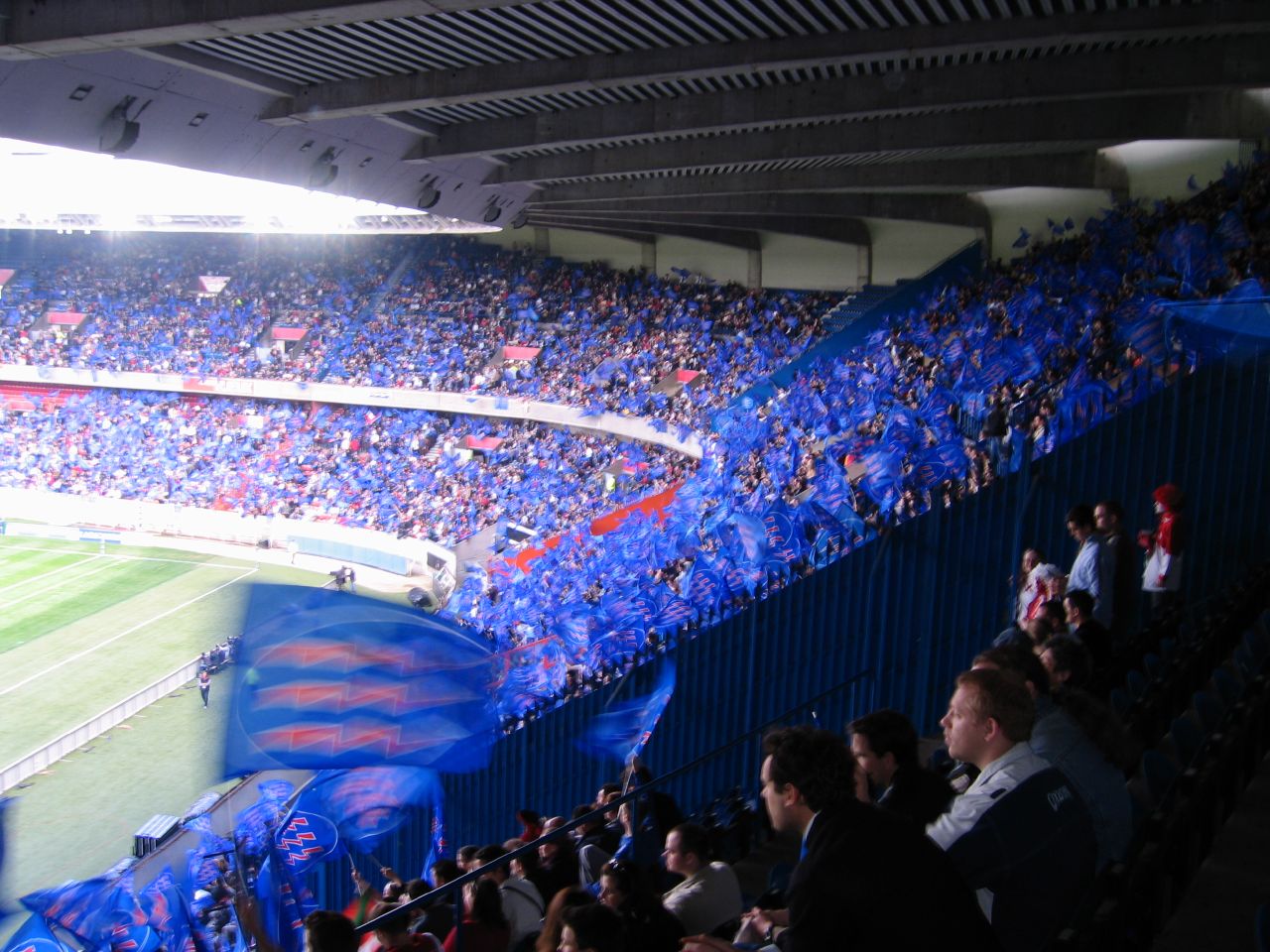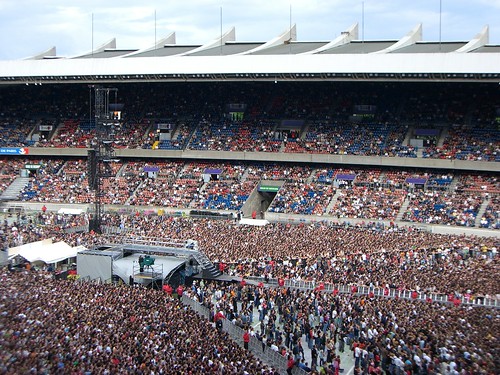
Paris attractions have tempted visitors to the city for decades. More recent additions to an already very long list of ancient monuments and other Parisian attractions are the likes Disney World and the Parc de Prince stadium.
The stadium was built to replace the old Vélodrome built in 1897 which stood on this impressive site till the Parc was built. Today, major football (such as Paris st Germain home games) and rugby matches take place at the Parc and then there are the concerts!
George Pompidou, the then president, opened the Parc des Prince on 4th June 1972 with the first match ever to be played on these hallowed grounds being the Coupe de France final, a match played between SC Bastia and Olympique de Marseille – which the latter won. The stadium was filled to capacity – the whole 48,527 seats.

A Stadium That Won Awards
The Architecture was considered very Avant garde winning both the building and the architect many prizes. Roger Taillibert was the Architect; the 50 concrete columns supporting the roof were his brainchild and the reason why so many architectural awards were won.
Getting to the Parc
Getting to the Parc by Metro is easily done – the stop to get out at is the Porte de Saint-Cloud station from line 9 – the stadium is just a five minute walk from there. From central Paris, line 9 goes through the city centre – on the north bank.
By bus from the centre of Paris, there’s a choice of three, the 22, 62 and 72 which go to Porte de Saint-Cloud. The actual address of the Parc des Princes is 24, Rue du Commandant Guilbaud, 75781 Paris.
Where to Stay & Where Eat
The neighbourhood around the Parc has a typical Parisian ambiance with many bars and brasseries on most of the street corners – as per usual, the food served is very good.
Hotel wise there are many in the vicinity of the Parc. However, it might not be a good idea to stay too close because of the inevitable noise from the stadium. However, with two metro lines close by, it is easy to get into the centre of town without any effort or trouble.

How to purchase Tickets
You can buy tickets for PSG games by going online or you can call the stadium directly. Another method is at the stadium itself from any of the PSG service points. The cost of a ticket can range from anything between €20.00 to €100.00.
Conclusion
Organised tours around the Parc last around an hour and includes being taken through the dressing rooms, players’ tunnel where many a famous sportsman has tread. Visitors also get to see the VIP boxes and admire the fabulous cups and shields in the trophy room. For air travel it’s important to do some flight comparison checks to make sure you get the best deals.
Tours are organised three times a week, on Wednesdays, Fridays and Saturdays. They start at 3pm, 4pm and 5pm although occasionally there’s a guided tour organised for 6pm.
Tours take place every day during the school holidays except Sundays. However, there are no tours on match days or the day before. The great thing is you don’t have to pre-book but it is possible. You can book tickets at the PSG shop on the Champs- Élysées or you can opt to do this at the stadium.
The cost of a guided tour around the Parc des Princes is €10.00. It’s a great way to get a real feel of the place which is pretty impressive to say the least – especially when the stadium’s empty.
Featured images:
 License: Creative Commons image source
License: Creative Commons image source License: Creative Commons image source
License: Creative Commons image source
Written by Nathan Griffiths who is a sports enthusiast and loves travelling to Paris.
Please like O-Posts on Facebook
You can follow O-Posts on Twitter @OPosts





